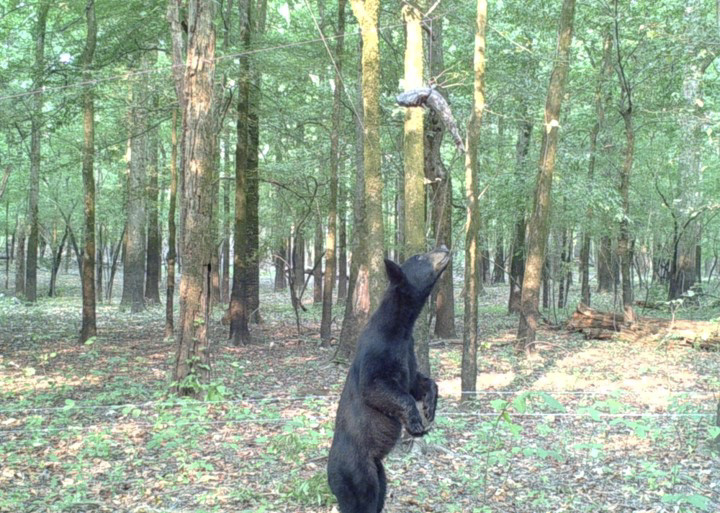UAM NEWS
Arkansas Black Bear Populations on the Rise

MONTICELLO, Ark. — According to Dr. Don White, Jr., professor for the College of Forestry, Agriculture and Natural Resources (CFANR) at the University of Arkansas at Monticello, black bear populations are slowly rising in the bottomland hardwood forest of southern and eastern Arkansas.
Population modeling results from a recent study led by Dr. White indicate that the population density of black bears in the West Gulf Coastal Plain (WGCP) of southeastern Arkansas is approximately one black bear for every five square miles. The black bear population in the area is growing at approximately four percent per year.
As the bear population has expanded in the WGCP over recent years, interest in hunting bears in the area has increased as well. However, establishing and maintaining sustainable harvest levels requires reliable information on the population status. To assist the Arkansas Game and Fish Commission (AGFC) with setting harvest levels, White led a population study using hair snares across the region.
“To establish and maintain sustainable harvest levels for black bears, AGFC biologists need to know the number of bears that occur in the region and the growth rate of the population,” Dr. White said.
During two summers within the past five years, Dr. White and his field crews placed 360 hair snares throughout the WGCP, including the Felsenthal and White River National Wildlife Refuges and the Trusten Holder Wildlife Management Area.
“A hair snare is nothing more than two strands of barbed wire stretched tightly around three to five trees,” Dr. White said. “Attractants such as candy flavorings and fish were then hung from a rope located at the center of each enclosure. As a bear is attracted to the scent, the bear crawls under or steps over the barbed wires. As they move, the bears get their hair snagged by the barbs. From these hair samples, DNA is extracted and used to identify each bear.”
Because the DNA of bears in southeastern Arkansas is slightly different from the DNA of bears in the Ouachita and Ozark Mountains, DNA can also be used to better understand the movement of bears between different areas of the state.
“Bears from the Ouachita Mountains in western Arkansas may be dispersing and moving south and southeast. My AGFC colleagues and I are using our bear genetics data to better understand bear dispersal and map the locations of bear movement corridors. This is important work because genetically connected bear populations are healthier bear populations. Connected populations do not suffer the consequences of limited genetic variability like isolated populations do,” Dr. White said.
Throughout each nine-week collection period, field crews checked the hair snares every seven days. These crews consisted mostly of undergraduate wildlife conservation and management students in the College of Forestry, Agriculture and Natural Resources at the University of Arkansas at Monticello (UAM).
“Opportunities to get paid to work on research projects provide students with valuable educational and professional opportunities,” Dr. White said.
Dr. White is a wildlife ecologist for the Arkansas Forest Resources Center of the University of Arkansas System Division of Agriculture housed at UAM and has studied black bears in Arkansas for almost 20 years. He is also a James White Endowed professor of wildlife with UAM.